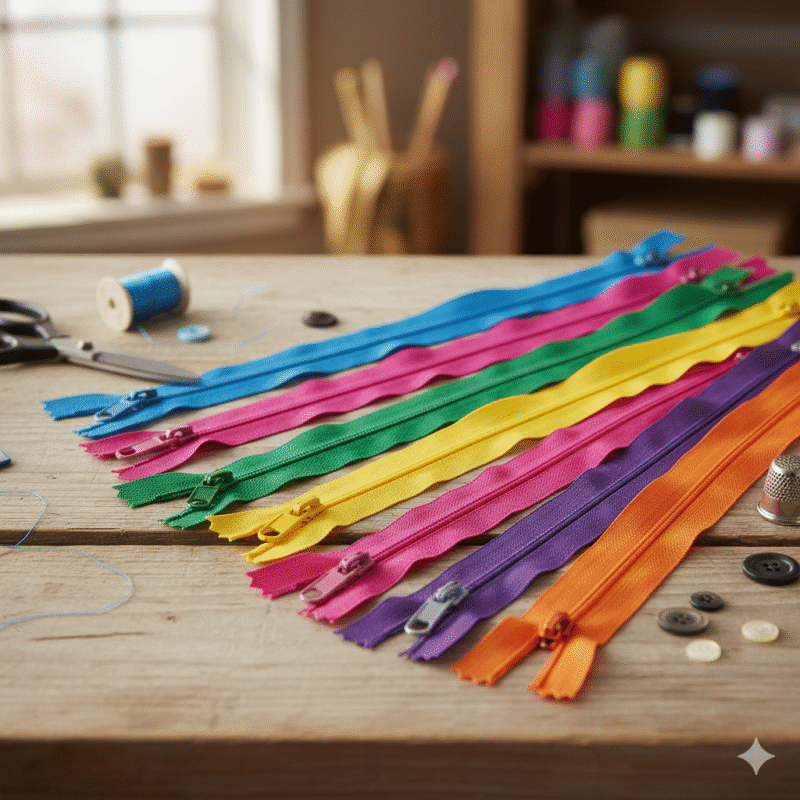There’s nothing more frustrating than putting hours of effort into a beautiful handmade project, only for it to be marred by a stubborn, snagging, or ill-fitting zipper. We’ve all been there! But what if we told you that many zipper woes can be avoided simply by choosing the right zipper from the start?
At Bunoveli, we believe your creations deserve the best, down to every last detail. That’s why we’ve put together this ultimate guide to help you navigate the world of zippers, ensuring a smooth, professional finish every time. Say goodbye to zipper dilemmas and hello to seamless crafting!
Understanding Zipper Anatomy: More Than Just Teeth
Before we dive into the different types, let’s quickly break down the basic parts of a zipper. Knowing these terms will help you understand their function and what to look for when selecting yours.
- Teeth/Elements: The interlocking parts that open and close the zipper. These can be made of plastic, metal, or coil.
- Slider: The mechanism that moves up and down, engaging and disengaging the teeth.
- Pull Tab: Attached to the slider, this is what you hold to operate the zipper.
- Stops: Small pieces at the top and bottom of the zipper that prevent the slider from coming off.
Your Bunoveli Guide to Zipper Types & Their Best Uses
Not all zippers are created equal, and knowing their specific strengths is key. Here are the most common types you’ll encounter and where they truly shine:

What they are: These zippers have plastic (nylon or polyester) teeth that are formed into a coil shape. They are incredibly flexible and lightweight.
- Best for: Everyday garments, cushions, light jackets, children’s clothing, and bags where you need a flexible closure. They are generally less prone to breaking than metal zippers if snagged.
- Bunoveli Tip: Our coil zippers come in a fantastic array of colors, perfect for adding a pop to any project!
Sign up for our newsletter below for exclusive crafting tips, new product alerts, and special discounts!
